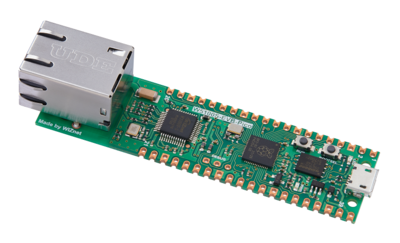Difference between revisions of "PicoTuner Ethernet Interface"
| Line 12: | Line 12: | ||
In case of problems, or to find the PicoTunerWH IP address, see the section on the broadcast packet below. | In case of problems, or to find the PicoTunerWH IP address, see the section on the broadcast packet below. | ||
| + | |||
| + | The LNB voltage is turned on automatically at power up. If LNB voltage is not required, remove the LNB voltage jumpers on the PicoTuner pcb. | ||
If the software loaded is not the correct version for the type of Pico board, the Pico and activity LEDs will repeatedly flash NO in morse (-. ---) | If the software loaded is not the correct version for the type of Pico board, the Pico and activity LEDs will repeatedly flash NO in morse (-. ---) | ||
| Line 34: | Line 36: | ||
The received transport stream (TS) data will not be sent anywhere, until a command is received. | The received transport stream (TS) data will not be sent anywhere, until a command is received. | ||
| + | |||
=Overview= | =Overview= | ||
Revision as of 09:07, 23 July 2024
In progress . . .
PicoTunerWH (PicoTuner in WinterHill mode)
PicoTuneWH is software for the BATC PicoTUner.
When the standard USB connected PicoTuner is replaced by a WIZnet W5100S-EVB-Pico or W5500-EVB-Pico module, this provides two receivers which can be controlled over the Ethernet connection and can send the received transport streams via the Ethernet connection, similar to a WinterHill.
Quick Start
In case of problems, or to find the PicoTunerWH IP address, see the section on the broadcast packet below.
The LNB voltage is turned on automatically at power up. If LNB voltage is not required, remove the LNB voltage jumpers on the PicoTuner pcb.
If the software loaded is not the correct version for the type of Pico board, the Pico and activity LEDs will repeatedly flash NO in morse (-. ---)
Connect an Ethernet cable.
Load the W5100S or W5500 .uf2 file, depending on the type of Pico board.
The Pico and activity LEDs will flash HI in morse (.... ..)
There is a three second pause for initialisation.
The Pico then attempts to get an IP address via DHCP.
The Pico and PicoTuner activity LEDs do a single blink every second when waiting for a physical Ethernet link.
The LEDs do a double blink every second when waiting for a DHCP address.
The Pico LED is steady on when DHCP is successful.
If the LNB LO is 9750MHz and powered by the PicoTuner or otherwise, the activity LEDs will start flashing after a few seconds, indicating double reception of the beacon.
The received transport stream (TS) data will not be sent anywhere, until a command is received.
Overview
There is no transport sream transfer by USB. A USB connection is not required.
There are different .uf2 files for W5100S-EVB-Pico and W5500-EVB-Pico modules.
There is a debug facility over the USB serial port.
This software is compatible with OpenTuner (0.B).
Network multicast is not supported.
A broadcast packet with device and receive info is transmitted every second on port 9997, even if DHCP is unsuccessful.
If you do not have a WinterHill, see the BATC Wiki, particularly the Documentation and PC Software sections.
Finding the IP Address
See the section on the broadcast packet below.
LNB PSU Output
The LNB PSU is turned on by default at startup. If you do not want LNB voltage, make sure the LNB PSU jumpers are not fitted on the PicoTuner board.
Software Loading
Connect the USB port to a PC.
Apply power to the PicoTuner while holding down the BOOTSEL button on the Pico board.
On a Pico with two buttons, this is the button nearer the USB socket. The other button is RESET, which can be pressed while holding down the BOOSEL button.
A virtual disk drive window will open on the PC. Copy the appropriate .uf2 file to it. The PicoTuner will restart.
